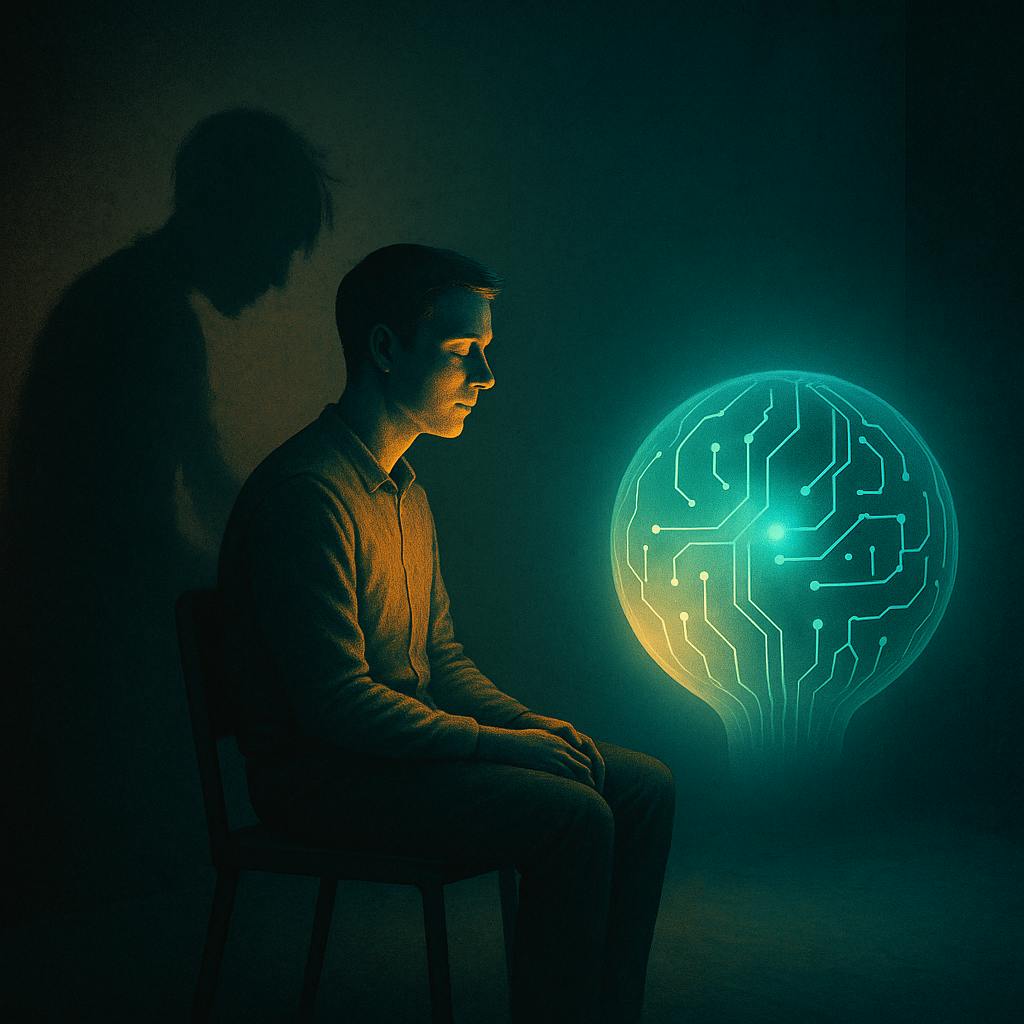Every time your watch tells you to breathe, it learns a little more about your anxiety, and you learn a little less about yourself.
We once built machines to calculate, then to remember, and now to comfort. Our devices monitor sleep, detect stress, and remind us to stay calm. They read the rhythm of our pulse and the tone of our voice, turning emotion into data. For the first time in human history, we have systems that measure not only what we do but how we feel.
This is extraordinary progress, but it has created a quiet dependency. The more we allow algorithms to manage our emotions, the less we practice doing it ourselves.
The automation of calm
Emotional regulation is not automatic. It is a skill developed through friction, reflection, and recovery. When you sit with fear until it softens or breathe through stress until the body steadies, your brain rewires itself. The prefrontal cortex learns to calm the amygdala. This process builds resilience, the ability to face discomfort without collapsing into it.
When technology steps in to soothe us instantly, that learning process is interrupted. The app offers a breathing exercise before we even notice our breath tightening. The chatbot responds with sympathy before we have found the words for what hurts. The watch alerts us that we are anxious before we have understood why. Each moment of help removes one moment of self-contact.
The brain strengthens what it repeats. If we repeatedly hand over control of our inner states to machines, we weaken the circuitry that allows us to self-regulate.
The illusion of digital peace
Data feels like control. It turns something invisible, emotion, into numbers and graphs. When the graph looks stable, we feel stable too. But emotional health is not a chart. A person can show perfect metrics and still feel empty, lonely, or overwhelmed.
This confusion is dangerous in workplaces where wellbeing is now tracked by dashboards. Managers read engagement scores and AI-generated stress indicators as truth. Yet behind those metrics may be people quietly burning out, adapting their emotions to fit what the system expects to see.
Technology should expand awareness, not replace it. It can remind us to breathe, but it cannot give that breath meaning. Awareness begins when we listen to ourselves without the translation of data.
The ethics of emotional outsourcing
Emotion-aware AI is becoming common across health, education, and HR. It can detect sadness in speech, recognize fatigue in facial expressions, and flag signs of distress in written messages. These tools can save lives and improve access to care. Yet they also blur the boundary between observation and intervention.
Who decides when your stress level is too high?
Who owns your emotional data once it is collected?
What happens when an algorithm begins to predict your mood before you feel it?
Empathy is not pattern recognition. It is a shared state of awareness that cannot be replicated by code. Machines can mirror compassion but not experience it. The more we simulate care, the easier it becomes to forget what genuine human presence feels like.
The danger is not that AI will feel too much. It is that people will stop bothering to.
Teaching emotion instead of outsourcing it
There is a better path for technology, one that treats emotion as a skill to be strengthened rather than a symptom to be managed. In neuroscience and immersive therapy, researchers are already exploring how virtual environments can help people rebuild emotional control.
Inside a guided simulation, a person can safely experience anxiety, regulate their breathing, and observe how the body responds. Over time, this practice restores the natural feedback loop between thought, sensation, and calm. The aim is not to suppress emotion, but to understand and integrate it.
This is what ethical technology looks like. Tools that return agency to the user instead of removing it. Machines that help us learn to manage emotion rather than promising to do it for us.
Emotional literacy in the age of assistance
As artificial intelligence becomes more embedded in our daily routines, a new kind of literacy will be essential. Digital literacy teaches us how to use devices. Emotional literacy will teach us how to stay ourselves while using them.
For organizations, this means replacing passive wellness apps with programs that cultivate awareness and resilience. For individuals, it means remembering that calm cannot be downloaded and self-trust cannot be automated. The nervous system learns through lived experience, not through notifications.
Technology can remind us to pause, but it cannot decide why that pause matters. That understanding must come from within.
The human choice
We wanted AI to take away our stress. Instead, we gave it our silence.
The future of emotional technology should not aim to numb the human experience but to refine it. Machines can help us see patterns in our inner world, but the decision to feel, reflect, and recover will always belong to us.
The greatest promise of technology is not that it can heal us. It is that it can remind us what it means to be human, if we do not forget to listen.


